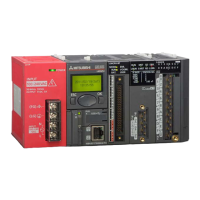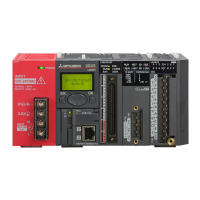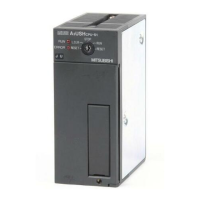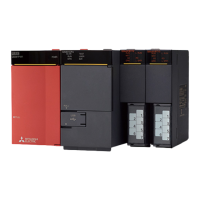3.6 Special Function Modules
3.6.1 Analog Modules
When you automate processes you will frequently need to acquire or control analog values
such as temperatures, pressures and filling levels. Additional analog modules are thus
required for inputting and outputting analog signals.
Basically, there are two different kinds of analog modules:
쎲 Analog input modules and
쎲 Analog output modules.
Analog input modules can acquire current, voltage and temperature values. Analog output
modules send current or voltage signals to the module’s outputs.
Criteria for selecting analog modules
A wide range of analog modules are available for the MELSEC System Q and you need to
choose the correct module for each automation task. The main criteria for selection are as
follows:
쎲 Resolution
The resolution describes the smallest physical value that can be acquired or output by the
analog module.
In the case of analog input modules the resolution is defined as the change in voltage, cur-
rent or temperature at the input that will increase or decrease the digital output value by 1.
In the case of analog output modules the resolution is the change in the voltage or current
value at the module output caused by increasing or decreasing the digital input value by 1.
The resolution is restricted by the internal design of the analog modules and depends on
the number of bits required to store the digital value. For example, if a 10V voltage is ac-
quired with a 12-bit A/D converter the voltage range is divided into 4,096 steps (2
12
= 4096,
see section 4.3). This results in a resolution of 10V/4096 = 2.5mV.
쎲 Number of analog inputs or outputs
The inputs or outputs of analog modules are also referred to as channels. You can choose
analog input modules with 2, 4 or 8 channels, depending on the number of channels you
need.
Analog input modules
Analog input modules convert a measured analog value (e.g. 10 V) into a digital value (e.g.
4000) that can be processed by the PLC. This conversion process is known as analog/digital
conversion or A/D conversion for short.
Temperatures can be acquired directly by the analog modules of the MELSEC System Q but
other physical values like pressures or flow rates must first be converted into current or voltage
values before they can be converted into digital values for processing by the PLC.This conver-
sion is performed by sensors that output signals in standardised ranges (for example 0 to 10 V
or 4 to 20 mA). The measurement of a current signal has the advantage that the value is not fal-
sified by the length of the cables or contact resistances.
MELSEC System Q Beginners Manual 3 – 31
Special Function Modules Das MELSEC System Q
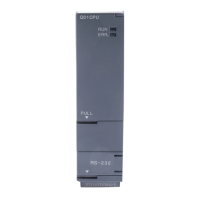
